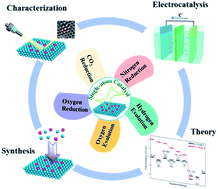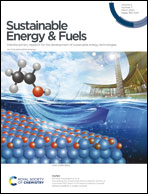Single-atom catalysts for electrochemical clean energy conversion: recent progress and perspectives
Abstract
Development of single atom catalysts (SACs) with high catalytic efficiency has received significant attention. The preparation of SACs with maximum atom utilization can induce more active sites between the atoms and participating molecules, resulting in improved electrocatalytic activity. This review presents recent progress in the representative synthetic approaches and characterization techniques for SACs and their promising catalytic performance in electrochemical catalytic reactions including the oxygen reduction/evolution reaction (ORR/OER), hydrogen evolution reaction (HER), and carbon dioxide/nitrogen reduction reaction (CO2RR/NRR). The significance of the fabrication of nanostructures and single atom catalysts with high atom utilization will be presented in the Introduction section. Moreover, we investigate the relationship between the electrocatalytic properties and coordination structure of SACs based on experimental data and theoretical computations, which would provide rational guidance for efficient SAC design. Finally, the remaining challenges and perspectives are discussed for the future exploitation of high-performance single-atom electrocatalysts.

- This article is part of the themed collection: Sustainable Energy and Fuels Recent Review Articles


 Please wait while we load your content...
Please wait while we load your content...